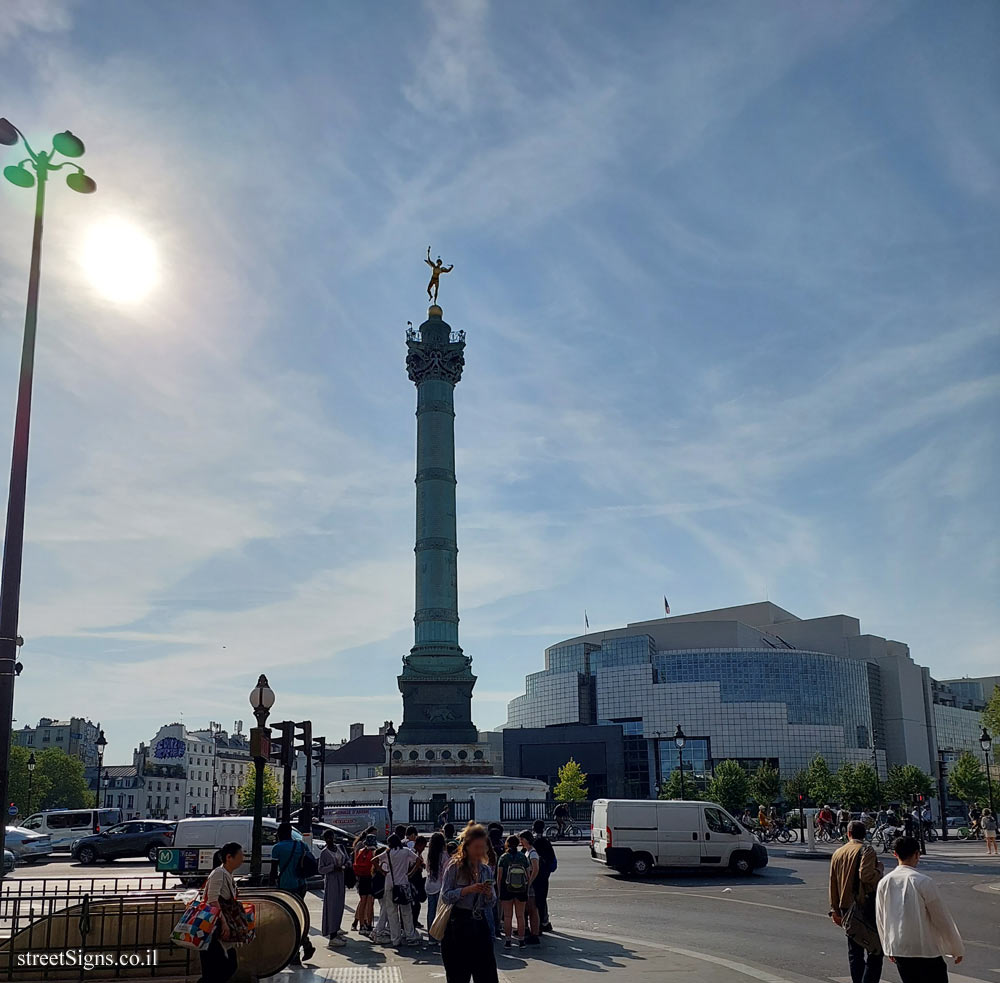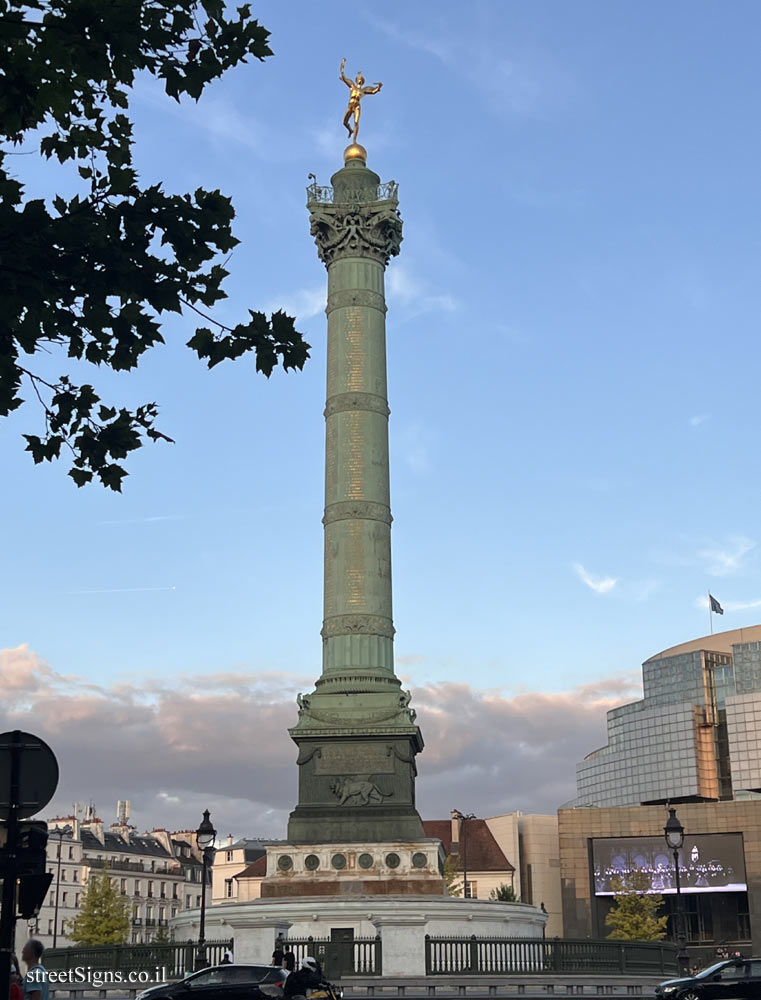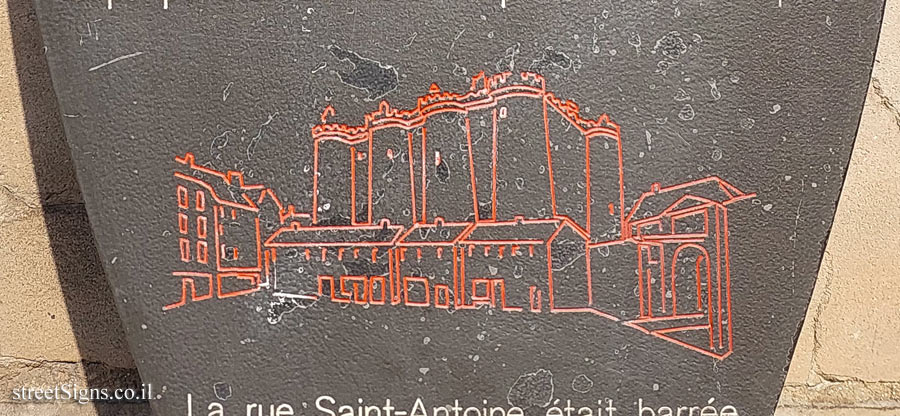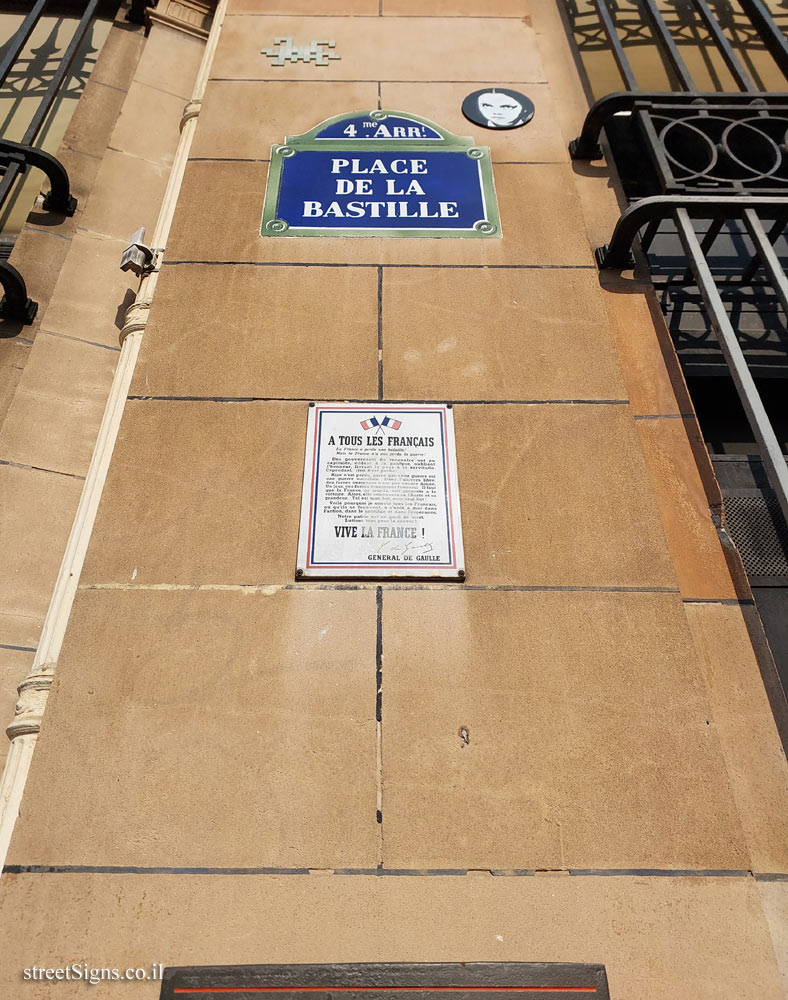One of the series of signs describing historical places in Paris. The signs were placed starting in 1992 and are also called sucettes Starck (Starck’s Lollipops) after Philippe Starck who designed them.
Bastille Square as it is seen from the place where the sign is placed and the July column (to commemorate the July Revolution of 1830) was taken on the same day
 Click for a larger image
Click for a larger image Another photo was taken in 2024 by Yael Gairola
 Click for a larger image
Click for a larger image The illustration in the center of the sign is shown here at magnification
 Click for a larger image
Click for a larger image Above the sign appears "Poster London"
 Click for sign's details
Click for sign's details In which is the summary of de Gaulle’s speech to the French nation
 Click for a larger image
Click for a larger image The remains of one of the towers of the Bastille, which were discovered where it stood, were moved to a nearby garden
 Click for sign's details Translation of the text on the sign
Click for sign's details Translation of the text on the sign:
[An illustration of a ship, symbolizing the symbol of Paris]
History of Paris The Bastille On April 22, 1370, the provost Hugues Aubriot laid the first stone of a fortified castle intended to protect Paris towards the east. To the four towers of Charles V, are added those of Charles VI, then a bastion facing the suburb under Henry II. In these towers were arranged the cells of the prisoners of State which were worth to the Bastille to become the symbol of monarchical despotism: on July 14, 1789, the seven boarders are carried in triumph.
The rue Saint-Antoine was blocked by the fortress and the entrance to the city was through the Porte Saint-Antoine located to the north, rue de la Bastille. Rebuilt by Blondel in 1671, in the style of a triumphal arch, this gate was demolished in 1778.

 Click for a larger image
Click for a larger image  Click for a larger image
Click for a larger image  Click for a larger image
Click for a larger image  Click for sign's details In which is the summary of de Gaulle’s speech to the French nation
Click for sign's details In which is the summary of de Gaulle’s speech to the French nation  Click for a larger image
Click for a larger image  Click for sign's details
Click for sign's details  Click for all signs belonging to The History of Paris (Starck's Lollipops)
Click for all signs belonging to The History of Paris (Starck's Lollipops)
 142 Meter |
142 Meter |  176 Meter |
176 Meter |  391 Meter |
391 Meter |  502 Meter |
502 Meter |  538 Meter
538 Meter